1Analysis and Processing of Electric and Energetic Systems Unit Faculty of Sciences of Tunis EL MANAR II, PB.1060, Tunisia
2Information System Department King Abdulaziz University Jeddah, Saudi Arabia
Corresponding author Email: nasri_sihem@live.fr
Article Publishing History
Received: 03/11/2018
Accepted After Revision: 19/12/2018
Vehicle-to-Home (V2H) has been identified as an interesting area of research because of its public services, which have incorporated new technologies and new devices for a better quality of life. The main goal of developing a smart home is to produce more efficient energy and achieve an optimal economy. To do this, hybrid electric autonomous systems which provide a required load demand are considered as an option to achieve effective energy production without interruption. In this context, a specific V2H simulation system integrating PEMFC technology (energy exchange membrane fuel cells), solar power and a Supercapacitor is described and developed. To balance between energy demand and supply, a unidirectional energy flow transfer is performed between the PEMFC hybrid electric vehicle and the home by providing the appropriate H2 amount. Indeed, the electric vehicle intervenes occasionally through its fuel reserve to boost the energy recovery process when the PEMFC and Supercapacitoroperation come across a problem.Therefore, an intelligent energy management approach (IEM) devoted for the V2H system is studied and evaluated. The proposed IEM serves for limiting energy consumption through the smart control of household electrical systems exploitation and equipment state in order to sustain the requirements. The obtained results are discussed and tested using the MATLAB / Simulink software. Indeed, given the Tunisian meteorological database and home consumption reports (on/ off appliances)extracted for 4 consecutive days, the proposed V2H technology provides an energy recovery rate of 17% and improves the system efficiency to 31%.
Supercapacitor; V2h; Control; Consumption; Production; Recovery
Sihem N, Sami B. S, Bassam Z, Adnen C. Intelligent Energy Management Dedicated to Vehicle-To-Home Applications: A Realistic Autonomous Hybrid Power System Using a PEMFC. Biosc.Biotech.Res.Comm. VOL 12 NO1 (Spl Issue February) 2019.
Sihem N, Sami B. S, Bassam Z, Adnen C. Intelligent Energy Management Dedicated to Vehicle-To-Home Applications: A Realistic Autonomous Hybrid Power System Using a PEMFC. Biosc.Biotech.Res.Comm. VOL 12 NO1 (Spl Issue February) 2019. Available from: https://bit.ly/2JAsiOD
Introduction
The rapidly growing energy demand rates of the world, which are coupled with the environmental impacts of this energy consumption, have raised concerns in various communities. This fatal problem is considered as an attracting research issue [1-2]. In recent times, smart home and smart grid have become the most important solution proposed which are presented as being a set of existing and emerging appliances and technologies, standards-based and interoperable, working together to develop the existing power grid [3-4]. In addition to renewable energies (such as: solar energy, wind power), the role of vehicles in the supply of domestic energy is seen as an opportunity for effective investigation. Using newly introduced technologies, vehicles (especially electric vehicles (EVs)) can be used as potential sources of energy for the home [5-6].
Various projects on the smart home, have considered V2H a novelty in a sophisticated home energy system since the V2H has been described as an energy system in which the battery of an electric vehicle is used to provide electricity to the home [7]. The proposed V2H was intended to provide the energy consumption required during peak periods when demand is highest. In addition to renewable energy sources such as solar energy, wind turbines, etc., can also be considered as an energy source for vehicles to meet the energy demand for the home [8]. Otherwise, several methods and platforms have been studied and developed for the smart home, such as Intelligent Sensor Technologies, Home Network, and Smart Home Appliance [9].
However, the full potential of smart homes is still present, due to the complexity and diversity of systems, as well as repeated control strategies without the problem of optimal level. Intelligent home energy management was aimed at controlling the application and data acquisition, the production, transmission and the network electricity [10-11]. Indeed, this intelligent management has attracted more interest from the research community to apply a modern automation technology in the smart promises house.
In this article, we aim to present and develop a precise home vehicle design using a PEMFC hybrid power system. To provide the necessary power to the automation of the house during the peak period, an intelligent energy management (IEM) is proposed. The proposed energy management aims to:
- Synchronize between the domestic energy demand and the energy storage of the electric vehicle.
- Regularize the proposed residential load and surplus of an electric vehicle (EV).
In the next section, we present a brief review of the published articles, almost classified according to thematic areas. The paper is organized as follows: Section 2 is devoted to survey the related works and contributions; Section 3 presents the description of the system and its components. Aproposed Intelligent Energy Management (IEM) approach is developed and detailed in Section 4. Simulation results are shown and evaluated in Section 5. Finally, the conclusion is made in Section 6.
Literature Review and Important Contributions
Literature review
To clarify contributions of our work, a survey on reported research on Vehicle –to-home applications and home energy management in smart households is outlined and detailed. In the literature, several studies have presented different applications on V2H. The proposed configurations were examined to prove that the power supplied to the electrical load is sufficient depending on the application or the power of the load. To establish energy demand during peak periods, energy EV is used here as a backup power.
For example, the authors in [12-13] presented a (V2H) system using Plug-In Electric Vehicle (PHEV) which can be recharged by connecting to an external power supply. Indeed, the proposed system aims to provide the necessary power in case of lack of energy.
In order to maximize the backup time and optimize the proposed model, an efficient algorithm has been developed and discussed. Subsequently, the proposed V2H design was extended to domestic vehicles (Vs2Hs) that combined several homes, solar power systems and electric vehicles. To balance the demand and the supply of energy, a new Vs2Hs algorithm has been suggested. The obtained results prove the effectiveness of the Vs2Hs under different scenarios. The authors of [14-15] have proposed smart home energy management that optimally plans for appliances based on real-time electricity price forecasts. The results obtained prove the effectiveness of the proposed algorithm to cooperate between the load request and the load. In [5-6], the battery energy storage system (BESS) was programmed in a coordinated way and the household appliances with high solar penetrations. in [16-17], a chosen load engagement platform was proposed to minimize household operating costs.
The authors in [18-19-20] proposed a renewable hybrid power system for home supplying using V2H technology. The proposed system deals to explore the role of V2H technology in Home in meeting energy needs for a building nets zero energy consumption. To this end, an optimization analysis is first performed choose the best design options for energy efficient building in the economic and environmental constraints. Then, solar photovoltaic sources are used to provide the rest of the building energy demand and reduce dependence on the building grid.


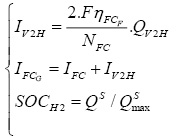





Context and Problematic
The recourse to renewable energies exploitationbecomes a national and international challenge to limit the use of the fossil resources that provokes harmful effects to the environment. Moreover, because of its exhaustiveness, theseresources can no longer be trusted to meet the energy needs in an unlimited way. Thus, the renewable energies integration can help compensating the energy requirement and reach the proper sufficiency. So, nowadays, with the computer revolution and electrical systems evolution, the world more particularly, the country is being front the problem of electrification service development. In this context, home automation and smart management seemto be a promising solution for streamlining energy consumption and providing more comfortable services to the user. On this basis, the idea of developing a smart home electrification system via V2H technology has been emerged to ensure the critical house need through the vehicle fuel reserve. Compared with research and scientific works presented in the literature, our work aims to highlight the hydrogen use as a main factor to manage the energy recovery process instead of batteries.
Contributions
Compared to previous related work, the main contribution expected from this work is to develop an accurate smart home using a Vehicle–to-home technology with an intelligent approach energy management based on the following improvements:
- System components protection be facing the deep Supercapacitor discharge and heavy fuel consumption.
- Energy demand satisfaction whatever the conditions: confront fuel and energy lacks.
System design and description
The objective of this work is to present a house electrification system capable of ensuring the energy requirements of the lighted up appliances. The described system deals with two main duties:
- The energy storage when the production exceeds the demand.
- The energy recovery when an energy lack is occurred.
| Table 1: The massive energy consumption and the high electricity demand have led to investigate optimal energy management methods to organize consumption activities and to strike a balance between production and demand. In this context, the State Operation Conditions | |||
| Actual State | Transition | Next State | Energy Flows |
| Startup | TD1:IDEM>IGEN | SD1: Deficit Process | IREC=IDEM-IGEN |
| SD1 | TD2:SOCH2> SOCCRH2 | SD2: FC Recovery | IFC=IREC |
| TD3:SOCH2=0 | SD3: SCap Recovery | ISC=IREC | |
| TD2:SOCSC=0 | SD4: V2H Recovery | QV2H=QCR | |
| SD2 | TD5:SOCH2 |
SD3: SCap Recovery | IREC=IFC+ISC |
| SD3 | TD6:SOCSC |
SD4: V2H Recovery | IREC=IFCG+ISC |
In this context, the study and the development of an energy recovery system is highlighted. The proposed system consists of a set of equipment as Fuel Cell and Supercapacitor used to compensate the energy when the demand exceeds the production. In addition, the system uses the hydrogen flow issued from an electric vehicle “V2H” in order to reward the critical energy need during the insufficiency moments and the lack of flows necessary for consumption (See Fig.1). Moreover, an Intelligent Energy Management “IEM” is presented in order to control the system operation to protect it against heavy H2 fuel consumption and deep Supercapacitor discharge.
| Table 2: Achieved system performances | |||||||
| Energy Generation (A) | Energy Demand (A) | Hydrogen Consumption (mol) | SC discharging (A) | Deficit Rate (%) | Recovery Rate
(%) |
Vehicle Recovery Rate (%) | |
| Day 1 | 6.25 | 9.99 | 1.01e-04 | 2.76 | 37.36 | 91.6 | 8.4 |
| Day 2 | 8.23 | 17.59 | 8.42e-04 | 0.46 | 53.20 | 62.88 | 37.12 |
| Day 3 | 10.25 | 19.13 | 0.0014 | 0 | 46.37 | 100 | 0 |
| Day 4 | 8.12 | 8.95 | 7.2984e-04 | 0 | 9.3 | 100 | 0 |
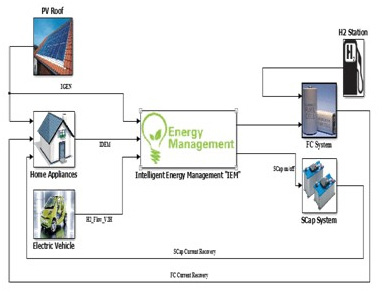 |
Figure 1: V2H System Design: (a) General Design; (b) Matlab/Simulink Prototype |
- The energy production:constitutes the energy issued from the photovoltaic module located at the house roof. the expression of the PV generated current is described as [21]:
- The energy consumption: is defined by the total installed appliances consumption. this energy may be used for lighting, heating, leisure,…
Fuel Cell Equipment: It is a generator which, in the presence of hydrogen, generates an electric current in order to assist in the load demand satisfaction. The hydrogen consumption is described according the Faraday law as [22]:
- Supercapacitor equipment:it is an electrical device that through its discharge can accomplish theenergy recovery process. So, to ensure its protection against the deep discharge, the Supercapacitor is controlled by its state of charge described by the following expression [23]:
- H2Station: It is equipment dedicated to the storage of the produced hydrogen flux. The storage process made under high pressure follows the law described by the equation below [24]:
- Electric Vehicle: It is an electric vehicle based on fuel cell that requires hydrogen as fuel to be running.
Intelligent Energy management proposed system uses an intelligent management strategy based on a theoretical application of a V2H system.Indeed, the V2H technology relies on energy satisfaction from the electric cars.
The basic idea of IEM halts on the measurement of some control parameters as energy consumption, the generated solar roof electricity and the terms of use of the vehicle based of component state of charge control. Hence, a model is used to forecast and estimate the energy required and the expected consumption flows. To better understand the functioning of the presented management strategy, an algorithm represented by a Petri nets model followed by a control flow chart is given by Fig. 2.
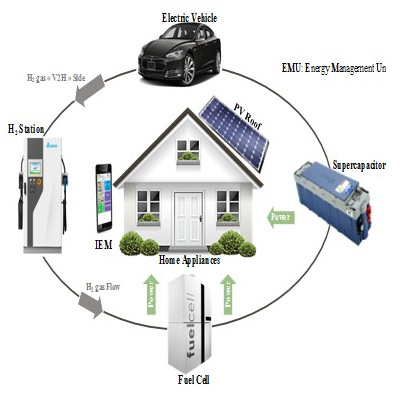 |
Figure 2: State Operation Conditions |
The recovery rate by component can be used to inform about the equipment intervention ratio during the recovery process. Thus, it is described by the ratio between the number of activation periods per component and the total number of deficit periods.
Where, PD represents the deficit period; while PACR defines the component activation period.
Finding and Results
To evaluate the system performance and to demonstrate its reliability to be against any unexpected events, numerous simulation tests have been made under Matlab/Simulink environment. Indeed, to accomplish the simulation process,experimental consumption profiles have been restored to describe the estimated electricity delivered to meet the required domestic appliances energy. Additionally, the present profile treats the house energy consumption for a 4 days period (96 hours). Thus, the Fig.3illustrates the energy production and consumption balance. As seen, the system is located under six different deficit periodsthat by referring to them, the system reactionwill be analyzed and studied.
 |
Figure 3: Energy Balance between Demand and Generation |
For the first deficit time, it is impossible to start up the fuel cell to cover the energy demand due to the hydrogen lack (SOCH2=0) then the condition TD2 is not validated. Since the condition TD3 is crossed, the system uses SCap to compensate the need. During the second, third and fourth deficit periods, the fuel cell is activated to satisfy the requirements. Thus, the system proceeds to state SD2. However in the fifth period, the system enters under state SD3that activates the SCap after the validation of the condition TD5. In the last period, it seems that the fuel cell and the SCap are located under their critical states due tothe full hydrogen consumption and SCap discharge. Thus, the system requests the vehicle assistance through its hydrogen reserve to complete the recovery process: state SD4.
The given Fig. 4 represents the generated currents during deficit energy cases while the Fig. 5 summarizes the transition between states in these periods. It is found that the fuel cell generates a recovery current as long as the quantity of hydrogen in the station appears sufficient to be converted into a load requirement or when the quantity is provided by the vehicle.
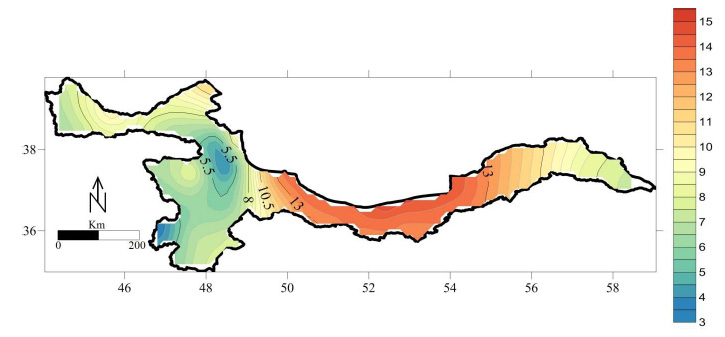 |
Figure 4: Energy Recovery Generation |
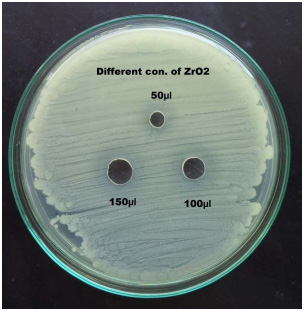 |
Figure 5: Component Activation versus Simulation Time |
Moreover, the Fig. 6 shows the relative hydrogen quantities estimated to be consumed (QREC), the possible consumption amount (QC) as well as the quantity required to be delivered by the V2H (QV2H) system respectively. According to the result found, it is well noticed that the system complains of a critical hydrogen need for the last deficit period during which neither the SCap nor the fuel cell can intervene since SOCSC=0 and SOCH2=0 (see Fig. 7). The recovery rate per component during the simulation test is given by Fig.8. As shown, the fuel cell is ranked first among the participating components by 50% followed by the SCap with 33% while the V2H system possesses the lowest recovery rate of 17%.
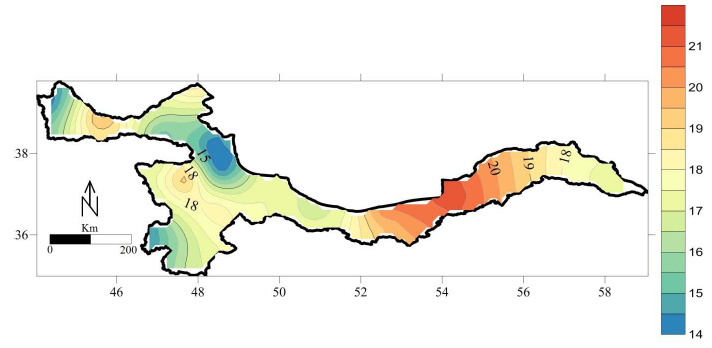 |
Figure 6: System Flows Consumption |
 |
Figure 7: System Control: Components States of Charge |
 |
Figure 8: Energy Recovery Rate Per Component |
Finally, we have studied the system mean efficiency whose obtained result is depicted in Fig.9. Indeed, the system reaches a 31% as overall efficiency value. However, the SCap outperforms the fuel cell efficiency by 78% versus 42%.
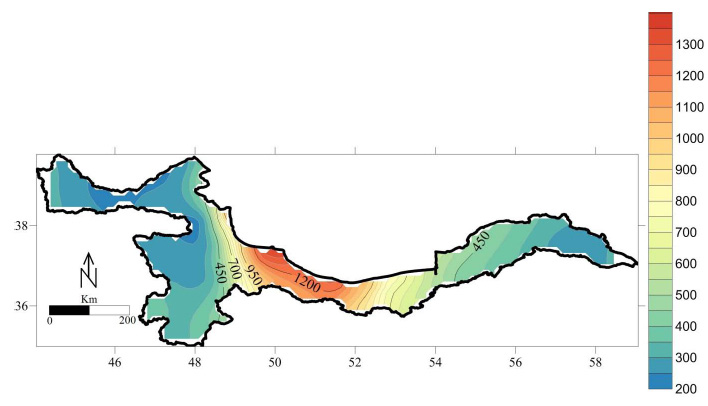 |
Figure 9: Energy Recovery Rate Per Component |
The table above summarizes the obtained performance of the system under study as the average of energy generation and consumption as well as the energy recovery rate.
Conclusion
In this paper, a model of energy recovery system based on V2H technology is proposed and detailed. This system permits to promote energy supply during high consumption periods in which the defeat of PEMFC and SCap is confronted to boost the energy recovery process.Furthermore, the proposed system has resorted to hydrogen use to involve the energy supply and to improve its performances in term of effectiveness and the reliability. Thus, to manage the energetic flows and to ensure the power distribution, an intelligent energy management approach is presented and described. Then, a Matlab/ Simulink prototype of the proposed system is made to test its performances. So, the obtained results show the ability of the system to deal with the changes and their impact on the equipment’s operation.As a future work, we tend to develop the overall system with the energy storage part (excess of power case) based on vehicle charging by produced hydrogen from the house (H2V).
References
- E. Gupta, “Global warming and electricity demand in the rapidly growing city of Delhi: A semi-parametric variable coefficient approach”, Energy Economics, vol. 34, no. 5, pp. 1407-1421, 2012.
- B. CELIK, R. Roche, D. Bouquain and A. Miraoui, “Decentralized neighborhood energy management with coordinated smart home energy sharing”, IEEE Transactions on Smart Grid, pp. 1-1, 2017
- L. Wang, A. Kusiak and A. Dounis, “Guest Editorial Special Section on Intelligent Buildings and Home Energy Management in a Smart Grid Environment”, IEEE Transactions on Smart Grid, vol. 3, no. 4, pp. 2119-2120, 2012.
- W. Zhao, L. Ding, P. Cooper and P. Perez, “Smart Home Electricity Management in the Context of Local Power Resources and Smart Grid”, Journal of Clean Energy Technologies, pp. 73-79, 2014.
- Q. Zhang and S. Zhang, “Smart Home Energy Management with Electric Vehicles Considering Battery Degradation”, Advanced Materials Research, vol. 860-863, pp. 1085-1091, 2013.
- N. Nezamoddini and Y. Wang, “Risk management and participation planning of electric vehicles in smart grids for demand response”, Energy, vol. 116, pp. 836-850, 2016.
- A. Hajizadeh and M. Kikhavani, “Coordination of bidirectional charging for plug-in electric vehicles in smart distribution systems”, Electrical Engineering, 2017.
- L. Kiat and N. Barsoum, “Smart Home Meter Measurement and Appliance Control”, International Journal of Innovative Research and Development, vol. 6, no. 7, 2017.
- E. Shirazi, A. Zakariazadeh and S. Jadid, “Optimal joint scheduling of electrical and thermal appliances in a smart home environment”, Energy Conversion and Management, vol. 106, pp. 181-193, 2015.
- J. Kim, “HEMS (home energy management system) base on the IoT smart home”, Contemporary Engineering Sciences, vol. 9, pp. 21-28, 2016.
- D. Dinh, J. Kim and T. Kim, “Hand Gesture Recognition and Interface via a Depth Imaging Sensor for Smart Home Appliances”, Energy Procedia, vol. 62, pp. 576-582, 2014.
- M. Tushar, C. Assi, M. Maier and M. Uddin, “Smart Microgrids: Optimal Joint Scheduling for Electric Vehicles and Home Appliances”, IEEE Transactions on Smart Grid, vol. 5, no. 1, pp. 239-250, 2014.
- D. Setlhaolo and X. Xia, “Optimal scheduling of household appliances with a battery storage system and coordination”, Energy and Buildings, vol. 94, pp. 61-70, 2015.
- Y. Yang, W. Zhang, J. Jiang, M. Huang and L. Niu, “Optimal Scheduling of a Battery Energy Storage System with Electric Vehicles’ Auxiliary for a Distribution Network with Renewable Energy Integration”, Energies, vol. 8, no. 10, pp. 10718-10735, 2015.
- Q. Chen and Y. Ma, “The Research on Cloud Platform Considered Privacy Household Load Data Processing”, Advanced Materials Research, vol. 1049-1050, pp. 1929-1933, 2014.
- X. Wu, X. Hu, Y. Teng, S. Qian and R. Cheng, “Optimal integration of a hybrid solar-battery power source into smart home nanogrid with plug-in electric vehicle”, Journal of Power Sources, vol. 363, pp. 277-283, 2017.
- M. Alirezaei, M. Noori and O. Tatari, “Getting to net zero energy building: Investigating the role of vehicle to home technology”, Energy and Buildings, vol. 130, pp. 465-476, 2016.
- W. Zhao, L. Ding, P. Cooper and P. Perez, “Smart Home Electricity Management in the Context of Local Power Resources and Smart Grid”, Journal of Clean Energy Technologies, pp. 73-79, 2014.
- H. Shin and R. Baldick, “Plug-In Electric Vehicle to Home (V2H) Operation Under a Grid Outage”, IEEE Transactions on Smart Grid, vol. 8, no. 4, pp. 2032-2041, 2017.
- L. Jian, Y. Zheng, X. Xiao and C. Chan, “Optimal scheduling for vehicle-to-grid operation with stochastic connection of plug-in electric vehicles to smart grid”, Applied Energy, vol. 146, pp. 150-161, 2015.
- C. H Li, X.J Zhu, G.Y Cao, S. Sui and M.R Hu, “Dynamic modeling and sizing optimization of stand-alone photovoltaic power systems using hybrid energy storage technology” Renewable Energy Journal, vol.34,pp.815-826, 2009.
- Y. Ates, O. Erdinc, M. Uzunoglu and B. Vural, ‘‘Energy management of an FC/UC hybrid vehicular power system using a combined neural network-wavelet transform based strategy’’, International Journal of Hydrogen Energy, Vol. 35, pp. 774-783, 2010.
- M. Hadartz and M. Julander, ‘‘Battery-Supercapacitor Energy Storage’’, Master of Science THPS is in Electrical Engineering Department of Energy and Environment, Division of Electric Power Engineering Chalmers University Of Technology , Göteborg, Sweden, 2008.
- T. Lajnef, S. Abid, and A. Ammous, ‘‘Modeling, Control, and Simulation of a Solar Hydrogen/Fuel Cell Hybrid Energy System for Grid-Connected Applications’’, Hindawi Publishing Corporation Advances in Power Electronics, 9 pages, 2013.


